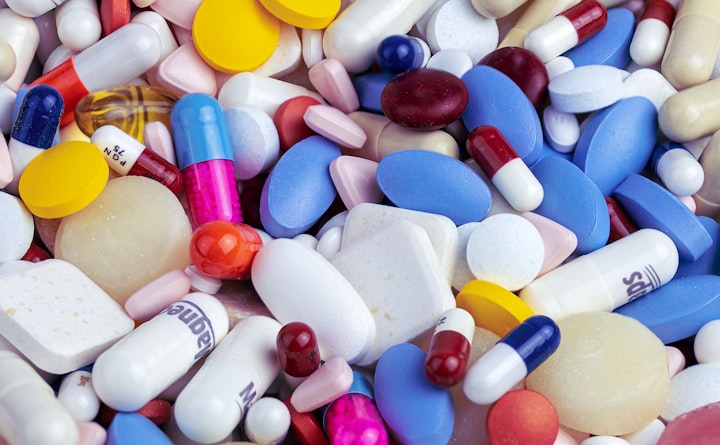What foods can help maintain good eyesight?
What to eat so that to see better? Alas, in the answer to this question, doctors are unanimous: there are no magic products for improving vision. If you already wear glasses or contact lenses, nutrition will not work to correct myopia and hyperopia. But at the same time, the correct diet helps prevent further deterioration of vision and take care of the prevention of possible diseases.

Back in 2001, the influential international journal JAMA Ophthalmology published a study on how nutrients and trace elements contained in various foods have a beneficial effect on vision. Scientists have found that zinc, copper, vitamins C and E, beta-carotene can reduce the risk of age-related visual impairment by 25 percent. In 2013, additional studies added other substances to this list: omega-3-polyunsaturated fatty acids, lutein, zeaxanthin - all of them proved to be indispensable for acute vision.
So what does the menu look like for those who care about eye health?
VITAMIN A-RICH FOODS
Vitamin A is good for the eyes: it reduces the risk of various visual impairments in children, serves to prevent cataracts and age-related macular degeneration - retinal damage that leads to visual impairment and one of the most common causes of blindness in people over 55 years old. But to get the daily dose of vitamin A from carrots, we would have to eat pounds of it daily. In some foods, the content of this vitamin is much higher than in the orange root vegetable. For example, there is a lot of vitamin A in animal products: liver, egg yolk, butter, as well as in plant products: sweet potatoes (sweet potatoes), spinach and kale (kale), pumpkin, lettuce, broccoli, red bell pepper, parsley, dill. These products in various combinations must be consumed daily. It is worth remembering that vitamin A is fat-soluble, that is, it is absorbed only in the presence of fats.
What to eat: Make a salad of leafy greens, bell peppers, parsley, and olive oil.
NUTS AND SEEDS
Vitamin E is equally important for eye health. Studies have shown that it also slows down the age-related stretching of the muscles of the eyes, which leads to their weakness, and prevents the development of cataracts. A small handful of almonds - about 30 almonds - contains half of the nutritionist's recommended daily value for vitamin E for an adult. Avocados, peanuts, pumpkin seeds, sunflower seeds, and even peanuts, even though they are not nuts, are good sources of vitamin E.
What to eat: An idea for a snack or a healthy dessert is candy made from nuts and dried fruits. Take dates or dried apricots, almonds, peanut butter, grind in a blender to a very thick paste. Roll into small balls and sprinkle with finely chopped nuts on all sides.
SALTWATER FISH AND SEAFOOD
The role of essential fatty acids in visual acuity has been studied in particular detail in the last 10-15 years. Now any ophthalmologist will explain that two types of omega-3 polyunsaturated acids (DHA and EPA) are involved in maintaining the structure of the retina and helping it perform its functions, as well as protecting this part of the eye from various inflammatory and age-related diseases. Fatty acid deficiency leads to dry eye syndrome. Both types of acids are found in oily sea fish - salmon, tuna, and trout. But oysters are the record holders for zinc content. This mineral helps vitamin A synthesize the pigment melanin. The pigment is responsible for eye color (the more melanin in the iris, the richer the color), and at the same time protects from harmful sun rays and prevents eye surface burns.
What to eat: Bake seafood with sweet potatoes. Chop the fish into portions, marinate in a mixture of herbs and olive oil, and bake in the oven along with small cubed sweet potatoes. The perfect combination of vitamin A and essential fatty acids.
CHEWING GUM
The positive effect on vision from the chewing process has been known for a long time. When we chew, the facial muscles work and the blood circulation in the upper part of the head improves. The blood, saturated with oxygen and nutrients, enters the brain, and also enters the retina through the ocular arteries. A normal blood supply helps the eyes to be nourished with all the necessary substances: without it, there will not be much benefit in the fact that you have consumed healthy foods, because some of them will simply be lost on the way to the organs of vision. A recent study by Japanese scientists showed that to improve blood flow in the eyes, you can use chewing gum. This advice is especially useful for those who spend a lot of time in front of a computer or smartphone screen: chewing gum will help to avoid increased eye fatigue, feelings of dryness and fatigue, and cramps.
What to eat: Dentists recommend that you consume sugar-free gum within 10 minutes after every meal and drink.






Comments
There are no comments for this story
Be the first to respond and start the conversation.